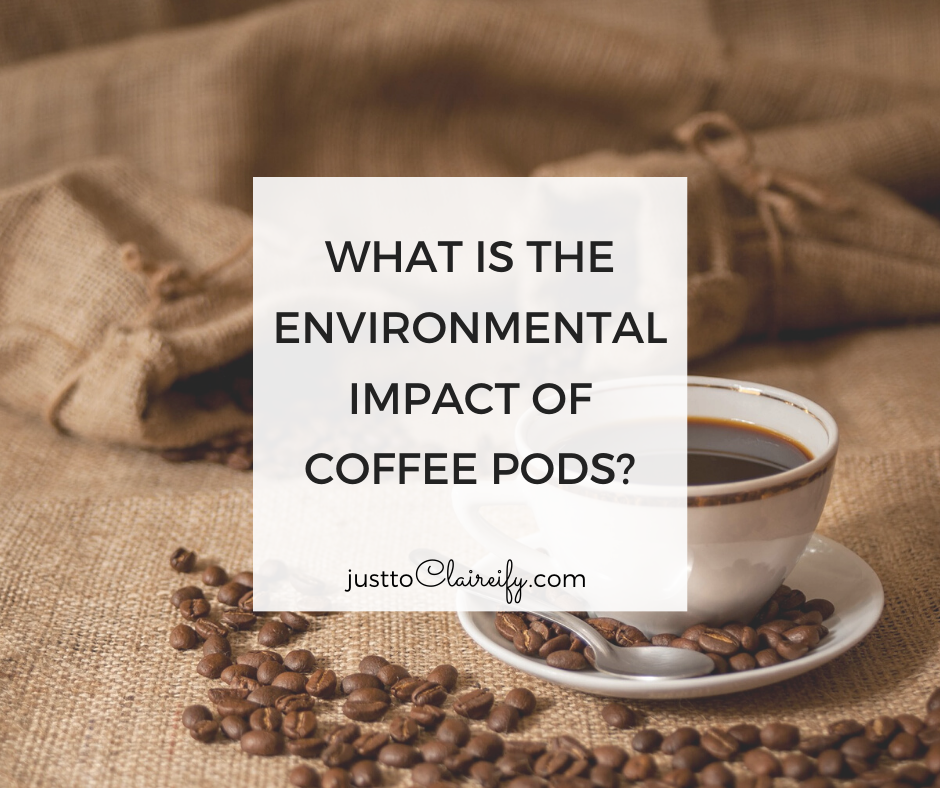 I have a six-month-old, so, coffee… it’s been on my brain a lot lately. I don’t actually own any type of coffee maker at the moment. And you know what’s appealing when you’re short on time in the mornings? A Keurig or Nespresso machine. They were made for busy mums.
I have a six-month-old, so, coffee… it’s been on my brain a lot lately. I don’t actually own any type of coffee maker at the moment. And you know what’s appealing when you’re short on time in the mornings? A Keurig or Nespresso machine. They were made for busy mums.
Plus, those little pods are recyclable, right? My dad and stepmom have a Nespresso machine. I remember having bags of used pods rattling around in the backseat when I borrowed his car in high school. So they’re environmentally friendly… right… right?
I decided to do a little digging to make sure my potential coffee maker wasn’t completely awful for the environment. Here’s what I learned about the environmental impact of coffee pods!
How Are Coffee Pods Recycled?
I quickly realized that K-Cups and Nespresso Pods are not created equal. While Keurig is aiming to transition to 100% recyclable pods by the end of 2020 (source), they aren’t right now. At the moment, you need to separate different components of the pod in order to recycle them, which requires a blade.
Also, if you read the fine print on Keurig’s website, “100% recyclable” means that it’s possible to recycle the pods, not that all local communities have the recycling capacity to do so. And unlike Nespresso, they have no numbers related recycling capacity on their site.
Alright–so I’d save for a Nespresso machine.
According to the Nespresso website, the process of recycling your used pods is simple. Just pop them in a Nespresso recycling bag, drop off the bag at a local collection point or participating store (there are 100,000 collection points around the world) and you’re done!
Aluminum is “infinitely recyclable” and can be turned into vehicle parts, computers, and food containers. The pods are first shredded, then cleaned, then heated to melt off their plastic coating. The coffee grounds are turned into compost or green energy. Finally, the aluminum is melted and reused.
Nespresso states that growing coffee and bean processing actually have larger environmental footprints than their pod packaging. And making exactly one cup of coffee is good for the environment because it doesn’t waste any resources (water, energy, or beans).
So what’s not to love?
How Many Coffee Pods Are Actually Recycled?
The real kicker of a question. Keurig’s and Nespresso’s recycling schemes sound great in theory, but what percentage of their pods are–or will be–actually recycled?
For a long time, Nespresso didn’t release statistics on what percentage of pods purchased are actually recycled (source). However, I located their sustainability report from the 2016 calendar year, which contains these numbers.
As of the end of 2016, 56% of capsules sold are “valorized”–“used to create value after consumption.” About half of these are directly recycled through their collection scheme. The other half are used to generate energy.
So that’s 44% of pods that get thrown in the trash. Figures on the sales of Nespresso capsules are hard to find. However, as of 2012, the company had sold more than 27 billion capsules around the world since they started selling them in 1986 (source).
On average, that’s just over a billion capsules per year. Or, 2.8 million capsules per day. And 1.3 million of those go straight to the landfill. And of course, that’s a conservative estimate since the company has (by all indicators) only grown and increased sales since its inception.
Yikes! That’s an awful lot of garbage being generated from single-serve coffee. Even if I carefully recycled every coffee capsule I used, I’d still be supporting an industry that produces an awful lot of garbage.
The Parent Company Controversy
Until I started researching the environmental impact of coffee pods, I didn’t realize that Nespresso is owned by Nestle. (As are many other brands that you probably recognize: Gerber, Purina, Haagen-Dazs, and Libby’s, to name just a few.)
Like many large corporations, Nestle has an interesting past. And yes, I mean that in the Minnesotan sense of the word. They’ve had more than their fair share of ethical scandals. You can read about how Nestle got third world mothers “hooked” on baby formula they couldn’t afford here, and a little episode from their history of water misuse here.
Overall, I have the same qualms with supporting Nestle via Nespresso products as I do with supporting Amazon via shopping at Whole Foods. While the acquired company may be “doing good” in their business efforts, the less ethical parent company is still benefitting from your purchase.
Conclusion
After researching the environmental impact of coffee pods, I won’t be buying a Keurig or Nespresso machine. I’ll probably just stick to black tea for now, and maybe go for a French press or pourover coffee in the future!
Are there any other topics related to food and the environment you’d like to read about? I forgot how much I enjoyed researching and writing these types of posts (my post on tuna fishing is my most popular of all time). I’m all ears for your suggestions!

